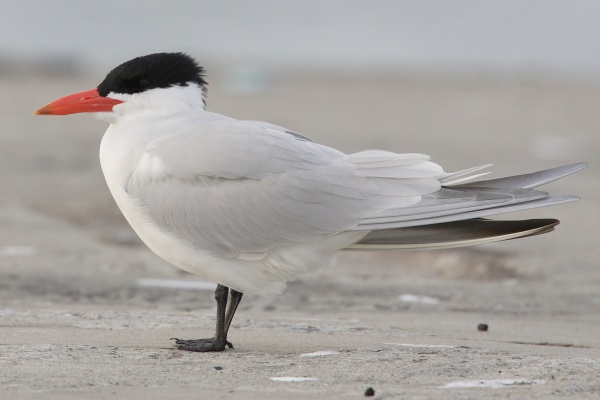Facts About Caspian tern
The Caspian tern is an impressive bird with a broad, albeit scattered, range. It is the sole member of its genus and lacks any recognized subspecies. Its name is derived from the Caspian Sea, and its genus name amalgamates ancient Greek and Latin words for "water" and "swallow."
These terns are unmistakable. Adults exhibit a white body, a striking black cap, a red-orange bill, and black legs. They are the largest tern species, measuring between 48-60 cm in length, with a wingspan of 127-145 cm, and weighing between 530-782 grams. Their call is a distinctive, loud croak reminiscent of a heron's. When in flight, their tails appear less forked compared to those of other terns.
Caspian terns have a diverse breeding range, from large lakes to ocean coasts across North America, Europe, Asia, Africa, and Australasia. Their migration patterns depend on their breeding locations. The global population is estimated at around 50,000 pairs. While their numbers are generally stable, some regions, such as the Baltic Sea, have experienced declines.
Fish constitute the majority of a Caspian tern's diet. They dive from heights to catch their prey but also consume insects, bird eggs, and even rodents. Breeding occurs in spring and summer, with nests constructed on the ground among gravel or vegetation. The incubation period lasts 26-28 days, and chicks take 35-45 days to fledge. These terns may nest in colonies or individually, often among other tern and gull species.
The Caspian tern is protected under the Agreement on the Conservation of African-Eurasian Migratory Waterbirds (AEWA). Conservation efforts are particularly vital for populations in decline, such as those in the Baltic Sea. In regions like Alaska, shifts in species distribution towards northern areas have been linked to global warming.
